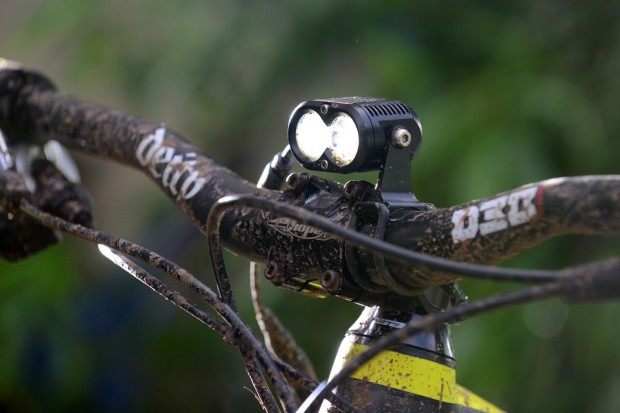
Your guide to buying a cyclo-cross bike
Cyclo-cross demands quite a lot from a bike so we’ve put together the key things you want to bear in mind before you invest.
Geometry and forks
Taking a quick look at a cyclo-cross bike you’d be forgiven for thinking it was a road bike with different tyres and brakes. But the geometry of the frame is quite different to that of a road bike, mainly due to the higher bottom bracket height to allow better clearance for the pedals and allowing riders to pedal over rough ground. The frames also have to be stronger to cope with the high stresses of riding fast off road, so oversized aluminium is the preferred frame choice these days.
A clean and wide triangle is required to allow the bike to be carried over a shoulder with ease, so bottle cages and pumps tend not to be catered for, cabling also is routed to avoid interference and discomfort during carrying.
Forks are rarely anything other than rigid, although there are a few manufacturers offering short travel suspension forks for use with 700c wheels, but these tend to be kept for more leisure type bikes. A true cyclo-cross bike has 700c wheels although many mountain bikers adapt their old mountain bike with 26” wheels for this winter sport.

Tyres
In the typically wet and muddy conditions a pair of knobbly tyres with plenty of grip and mud clearance are essential, avoid tyres thicker than 1.5” as narrower tyres can cut through mud better than fat ones. ‘Clincher’ rims, that’s standard style rims and tubes found on modern road bikes, are slowly taking over from the traditional tubular tyres on ‘sprint’ rims which require gluing in place. Michelin, Vredestein and Hutchinson offer a good range in knobbly cross tyres, their strengthened side wall casing allows high pressure levels to avoid pinch puntures. Wheels tend to be standard 700c road wheels, so choose a quality build and make, you’re looking for durability and strength above all else, but weight is important too. A quality hub will last much longer in the gruelling winter conditions than a cheap equivalent.
Pedals need to be good at shedding mud, as running through the undergrowth can make clipping back in a nightmare, double sided SPD type pedals are favoured, due to their ease of use and small cleats which don’t hinder running. Time and Crank Brother’s make pedals that excel in muddy conditions and rarely clog, making clipping in and out quick and easy.
Riding position
Riding position is variable depending on how comfortable you feel handling a bike off road and in wet conditions, competent riders may feel safe with a low bar position but it’s advisable to leave a longer steerer tube to allow for raising the bars if more height is required. Stem length tends to be slightly shorter than on comparable sized road bikes and with some degree of rise giving better handling characteristics off road.
Brakes and gears
There isn’t any specific cyclo-cross transmission gear so expect to find standard road bike running gear such as derailleurs and shifters. It’s rare to see bar end shifters these days and the most efficient shifters are those found on road bikes with integrated brake and shifter STI levers. Some bikes come with an additional set of brake levers positioned on the flat part of the handlebar, ideal for technical riding. Due to the varied terrain and steep inclines, a wide range of gears are essential with double chainrings with 39 to 48 teeth being standard or up to 50 on flatter, faster courses. Often a 12-26 teeth block is fine as riders tend to shoulder the bike and run up steep climbs rather than push an uncomfortable gear, but cyclo-cross racers run all sorts of odd gear combinations depending on the course.
High end cross bikes will come equipped with disc brakes, hydraulic systems are far superior to cable operated ones but also cost a lot more. Disc brakes do prevent mud clogging around the tyre and are far more effective in mud and wet conditions, but cantilevers are still a popular and cost effective way of braking.
Summary
A good cyclo-cross bike should be lightweight with good clearances, grippy tyres and reliable braking and gear shifting, and don’t forget it should be fast and fun to ride too. And who says you have to just stick to riding your cross bike off-road, they make excellent and fast commuter bikes, capable of keeping pace with road bikers too.




